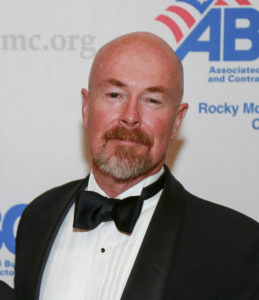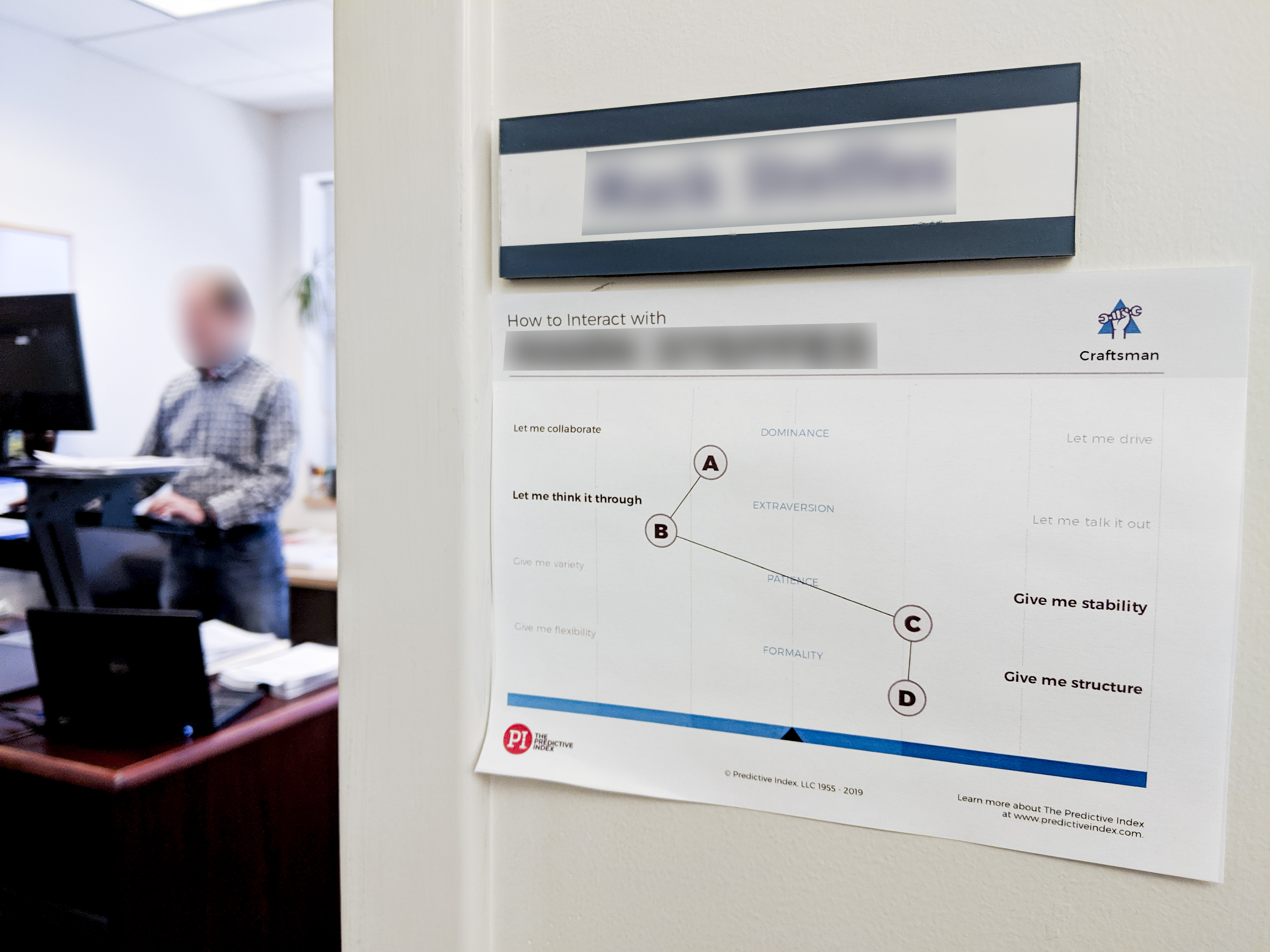
By Ned Foster, performance insight manager/proposal writer, Pinkard Construction
Specialist. Scholar. Craftsman. Collaborator. Maverick. Captain. Persuader. Altruist. Guardian. Venturer.
These talents can all be found within Pinkard Construction’s home office, in the field, and in particular, are specific personality traits of Pinkard employees. Each Pinkard office, each cubicle, has a placard at its entrance, describing the personality type of its occupant. Project engineers and project managers tend to be specialists and craftsmen. Marketing and business development people are your collaborators, altruists, and persuaders. And not at all surprising, company leaders are the captains and venturers.
For more than 20 years, Pinkard has utilized a highly accurate personality profiling service that has given the company an in-depth look into each individual’s work styles, motivators and de-motivators. Internal departmental partnering meetings were held to discuss each team member’s work styles to allow everyone to understand the best ways to work well together. But recent changes within the company, along with a new generation of employee that puts a greateremphasis on work/life balance, has led Pinkard to take dramatic steps to improve and expand its commitment to personality testing and its application in employee well-being along with corporate health and profitability.
Pinkard’s new approach continues to emphasize work styles, motivators and de-motivators, but employees are now schooled on their respective energies, or innate abilities to easily learn and complete certain job tasks and responsibilities. Some of these energies are obvious and intuitive, such as project engineers being highly technical and detail oriented. But Pinkard’s psychometrics assessment actually measures mental capacities and processes, and helps to identify where that energy best serves the company. Equally important, it gives an understanding of how the company’s use of those energies facilitates job satisfaction.
“Our approach is identifying each person’s unique energy strengths and designating responsibilities based upon the energy required. This idea of managing energy versus your time, it’s huge – it’s prioritizing. Everyone is so busy, there always seems to be so little time, so our approach focuses on who does what the best,” says HR Director Jeff Kessler.
Although Pinkard’s platform is much the same as other personality measurements, Pinkard’s use of the Predictive Index goes above and beyond by making the science more accessible to the user. The available tools and narrative provides a deeper understanding of how others communicate and process information. This collective understanding, along with what we believe about who we are and why we come to work, then permeates our culture.
“We put placards on everyone’s door so people can think about who they’re working with. We’re building teams, providing training, and having dialogue about our challenges, and where we’re strongest,” continues Kessler.
The benefit is three-fold. 1) the employee gets a better understanding of him/herself; 2) co-workers can flatten the learning curve during the team building process, and 3) managers get accurate, proven guidance on the best ways to utilize an employee’s top strengths. Ultimately it means individuals get to work more efficiently, teams work better together sooner, and managers don’t waste time trying to force square pegs into round holes. And very importantly, it makes for happy, satisfied employees, because no one is spinning their wheels trying to do things they’re not suited to do.”
This assessment is also allowing Pinkard to do some long-range team building by determining the ideal profile for each job description, and using it to guide hiring practices. “This ideal profile doesn’t mean that we’re not going to hire someone who isn’t a perfect match, but it does allow us to consider how far a person is going to have to stretch energy-wise to be a success at a particular job.”
Pinkard’s profiling is also making a huge difference in each individual’s career development. While any given position will have an ideal profile, it is common to have outliers – people who are good in their positions even though they don’t perfectly match the ideal profile. Understanding the nature of the profile deviation allows Pinkard’s career development managers to nurture the employee’s strengths and avoid expecting the employee to perform in ways he or she may not be best suited. For example, a project engineer with high non-conformity and independence traits may struggle staying motivated to work with rigid processes and procedures, but may have a passion for client communication and development. Pinkard’s career development approach allows the employee the flexibility to develop client communication and development strengths while providing the manager specific insight into the best ways to motivate the employee in other areas.
Pinkard is even considering expanding these behavioral assessments into entire project teams, incorporating owners, owner representatives, and architects, into the team building process. Pinkard expects the biggest long-term benefit to be aligning our client culture with our company culture.
“We recently got some feedback from one of our major, long-term clients that said, ‘We love to work with Pinkard because their employees do their jobs and they’re happy.’ says Kessler. “This was a significant observation. What could be better than having happy employees who nurture our clients? So the question became ‘how do we keep employees happy?’ And the obvious answer was to create a really good environment for them to work in. If we can create a great employee experience, the employees, in turn, can create a great client experience. We feel our behavioral assessments are allowing us to provide a creative, productive, and relatively stress-free workplace that allows each employee to play to their strengths and be happy in the process. Ultimately that happiness and satisfaction spills over into the way we serve our clients.”









